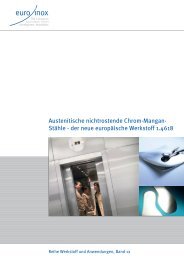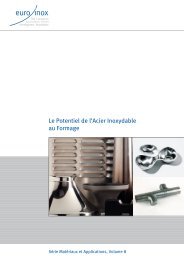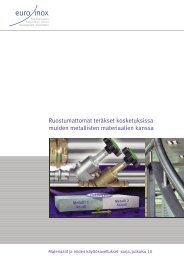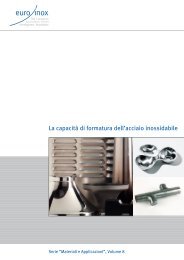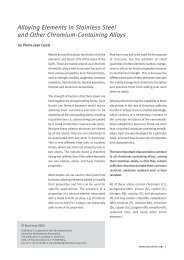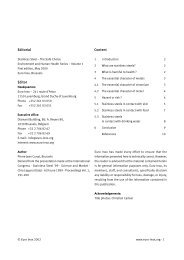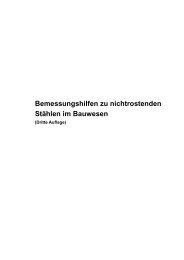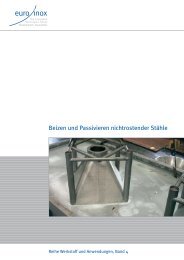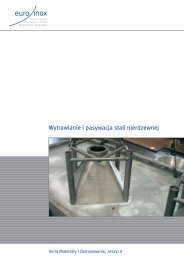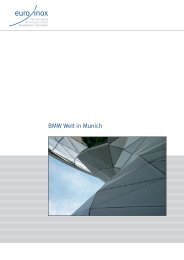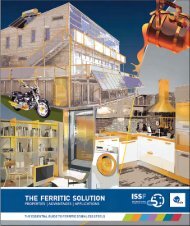Innovative Stainless Steel Applications in transport ... - Euro Inox
Innovative Stainless Steel Applications in transport ... - Euro Inox
Innovative Stainless Steel Applications in transport ... - Euro Inox
Create successful ePaper yourself
Turn your PDF publications into a flip-book with our unique Google optimized e-Paper software.
1.4 Future potential<br />
Future prospects for sta<strong>in</strong>less steel <strong>in</strong> rail and bus applications are expected to focus<br />
around two axes: the development of work-hardened sta<strong>in</strong>less steel fabricated<br />
components and the greater use of ferritic grades. Ferritic sta<strong>in</strong>less steel has also been<br />
tested successfully for structural applications. In this context, another aspect of<br />
<strong>in</strong>novation has been the <strong>in</strong>creas<strong>in</strong>g use of mechanical fasteners. This was <strong>in</strong>spired by the<br />
concept of modular design, which makes future refurbishment easier and less costly.<br />
Figures 23 and 24. Experimental structure<br />
and wall of a railway carriage <strong>in</strong> laser-cut<br />
ferritic sta<strong>in</strong>less steel hollow sections, us<strong>in</strong>g a<br />
mechanical fasten<strong>in</strong>g technique (Pauly 2007).<br />
An example of the weightsav<strong>in</strong>g potential of sta<strong>in</strong>less steel can be found <strong>in</strong> the U.S.,<br />
where the Department of Energy is support<strong>in</strong>g an R&D project of a prototype, hybrid<br />
electric, ultra-light, sta<strong>in</strong>less steel, 40-foot urban bus. This bus features a low-floor<br />
monocoque-type structure, four-wheel <strong>in</strong>dependent suspension (with no <strong>in</strong>terior<br />
<strong>in</strong>trusion for axle clearance) and a front-frame crush zone to improve occupant safety <strong>in</strong><br />
the event of a collision. The bus has an estimated curb weight of only 4,400 kg, which<br />
represents a mass reduction of 64 % compared to conventional buses and thus improves<br />
passenger-carry<strong>in</strong>g payload and fuel economy.<br />
16<br />
Figure 25. Rear view of an ultra-light,<br />
sta<strong>in</strong>less steel, hybrid electric transit bus<br />
be<strong>in</strong>g developed under a DOE/<strong>in</strong>dustry<br />
partnership (Fisher 2008).



